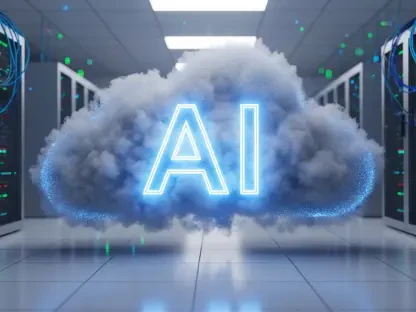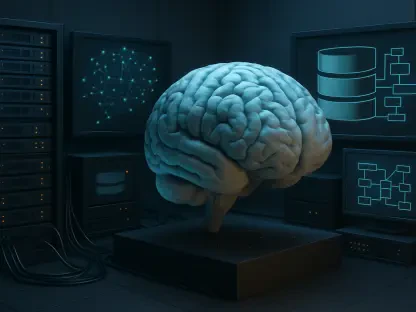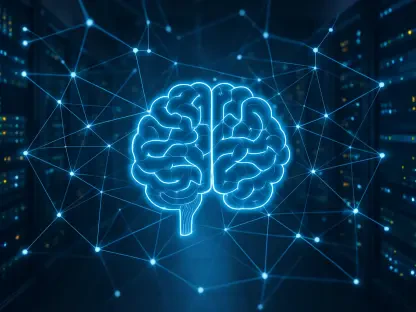As artificial intelligence (AI) continues to evolve at a rapid pace, its impact on IT and operational technology (OT) network management and cybersecurity is becoming increasingly profound. Organizations are shifting their focus toward integrating OT security as a primary concern, driven by the need to protect their complex and dynamic networks from cyberattacks. According to a recent Cisco report, the convergence of OT with enterprise IT networks has created new vulnerabilities that are challenging to manage, particularly for industries that rely on legacy systems and face an expanding attack surface.
The findings highlight the critical need for stronger collaboration between IT and OT teams to streamline operations and enhance cybersecurity. Currently, 41% of firms still operate these functions independently, a practice that can lead to inefficiencies and security gaps. By adopting a unified approach, organizations can prevent the diversion of valuable resources into attack mitigation efforts, freeing up these resources to be used for innovation and growth.
Integration of AI in Industrial Networks
AI as a Key Driver for Efficiency and Security
Innovative OT leaders are increasingly turning to AI to improve network management, boost efficiency, and ensure higher product quality. AI’s ability to automate repetitive tasks, enhance network performance, and provide predictive insights is making it an indispensable tool for modern industrial networks. In fact, 48% of respondents in the Cisco report have identified AI as a priority for future investment, reflecting a growing consensus on its potential to drive business growth.
AI can significantly improve the management of IT and OT networks by providing real-time monitoring, advanced threat detection, and automated responses to security incidents. This technological prowess is particularly beneficial in sectors with legacy systems that are more prone to vulnerabilities. The adoption of AI not only bolsters cybersecurity measures but also optimizes resource allocation and operational efficiency. As attacks become more sophisticated, AI’s role in staying ahead of potential threats cannot be overstated.
The Role of AI in Predictive Maintenance and Cost Reduction
Furthermore, AI is set to revolutionize predictive maintenance within industrial settings. By analyzing data from sensors and other monitoring devices, AI algorithms can predict equipment failures before they occur, allowing for timely maintenance and reducing downtime. This proactive approach not only saves costs associated with unplanned outages but also extends the lifespan of critical assets. The enhanced reliability and efficiency brought by AI integration are expected to provide a competitive edge for organizations that embrace this technology.
In addition to predictive maintenance, AI helps in optimizing supply chain operations by analyzing demand patterns and inventory levels. This enables better decision-making, reducing excess inventory and minimizing stockouts. The ability to predict and adapt to changing market demands swiftly ensures that businesses can maintain a steady flow of operations without unnecessary interruptions. Overall, AI’s multifaceted applications in industrial networks underscore its importance as a strategic asset for future growth and resilience.
Strengthening Cybersecurity through IT/OT Collaboration
Unified Cybersecurity Solutions for Improved Protection
Cisco’s report underscores the necessity for unified cybersecurity solutions that encompass both IT and OT environments. A staggering 92% of executive leaders acknowledge the value of such integrated approaches. This overwhelming consensus reflects the growing awareness that cybersecurity cannot be compartmentalized. Without a holistic strategy, organizations risk leaving critical vulnerabilities unaddressed, which could be exploited by malicious actors.
Cybersecurity compliance is another critical area where collaboration between IT and OT teams can yield significant benefits. According to the research, 89% of respondents consider compliance to be crucial for their security posture. By aligning compliance efforts, organizations can ensure that both IT and OT systems adhere to regulatory requirements and industry standards. This alignment not only strengthens overall security but also simplifies auditing and reporting processes, making it easier to demonstrate compliance to stakeholders and regulators.
Enhancing Decision-Making through Collaborative Efforts
A unified approach to IT and OT security also facilitates more informed decision-making. When IT and OT teams work together, they can share insights and data that provide a comprehensive view of the entire network infrastructure. This collaborative effort enhances the ability to identify vulnerabilities, assess risks, and implement effective security measures. Moreover, it fosters a culture of continuous improvement, where both teams are engaged in ongoing efforts to optimize security practices and stay ahead of emerging threats.
Additionally, collaboration between IT and OT teams enables quicker response times to security incidents. By breaking down silos and encouraging communication, organizations can ensure that both teams are on the same page when it comes to threat detection and mitigation. This coordinated response is essential for minimizing the impact of cyberattacks and maintaining operational continuity. As threats continue to evolve, the ability to respond swiftly and effectively becomes a critical component of a robust cybersecurity strategy.
The Future of AI and Industrial Cybersecurity
Trends and Predictions for AI Adoption
The comprehensive analysis provided by Cisco indicates that AI will play a pivotal role in the future of industrial networking and cybersecurity. As organizations continue to invest in AI technologies, it is expected that AI-driven solutions will become more sophisticated and capable of addressing a wider range of security challenges. The report highlights that 49% of respondents anticipate AI to significantly enhance network management across both IT and OT domains.
Given the increasing complexity of cyber threats, AI’s ability to analyze vast amounts of data and detect anomalies in real time will be crucial for maintaining robust security. As AI technologies evolve, they will likely incorporate advanced machine learning models that can adapt to new threat vectors and provide more accurate predictions. This continuous learning process ensures that AI-driven security solutions remain effective in a constantly changing threat landscape.
Preparing for the Next Wave of Technological Advancements
As artificial intelligence (AI) rapidly evolves, its influence on IT and operational technology (OT) network management and cybersecurity becomes increasingly significant. Companies are prioritizing OT security to safeguard their complex and ever-changing networks from cyber threats. A recent Cisco report highlights that the merging of OT with enterprise IT networks has introduced new vulnerabilities, especially challenging for industries reliant on outdated systems and facing a broader attack surface.
The report underscores the urgent need for enhanced collaboration between IT and OT teams to optimize operations and fortify cybersecurity. Currently, 41% of organizations still manage these functions separately, a practice that can cause inefficiencies and create security loopholes. By transitioning to a unified approach, companies can better allocate resources, minimizing their diversion into attack mitigation efforts. This strategy allows more resources to be directed toward innovation and growth, setting the stage for a more secure and efficient network management landscape.









